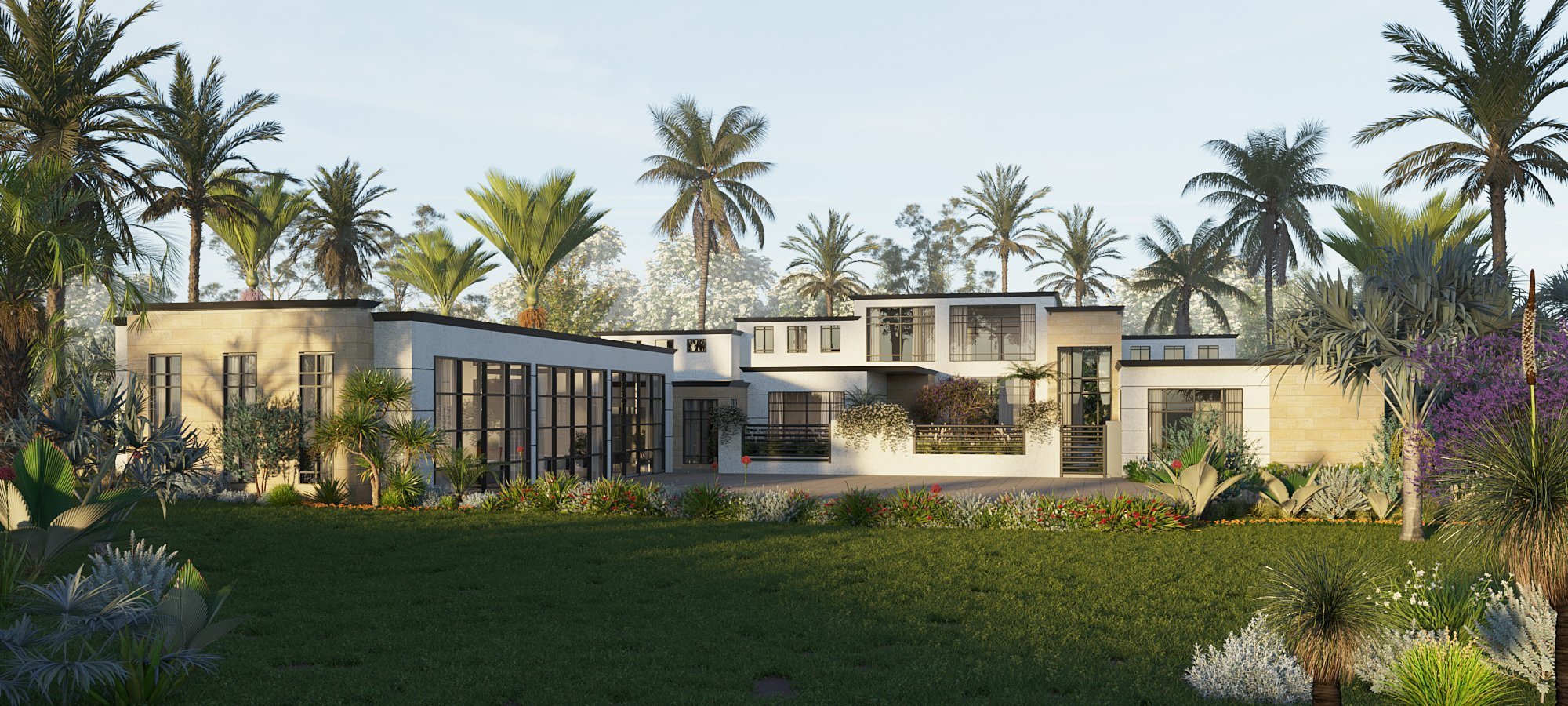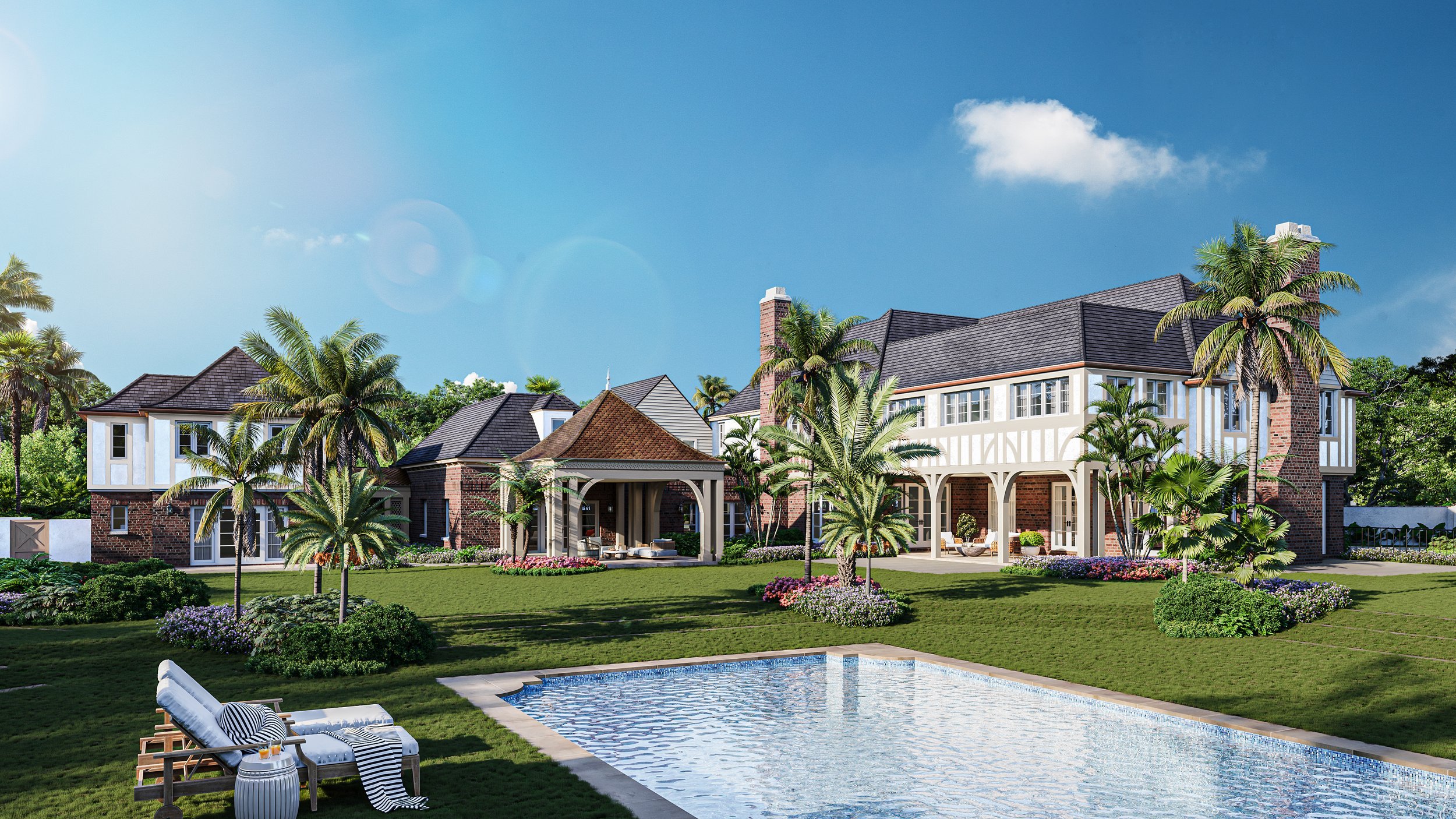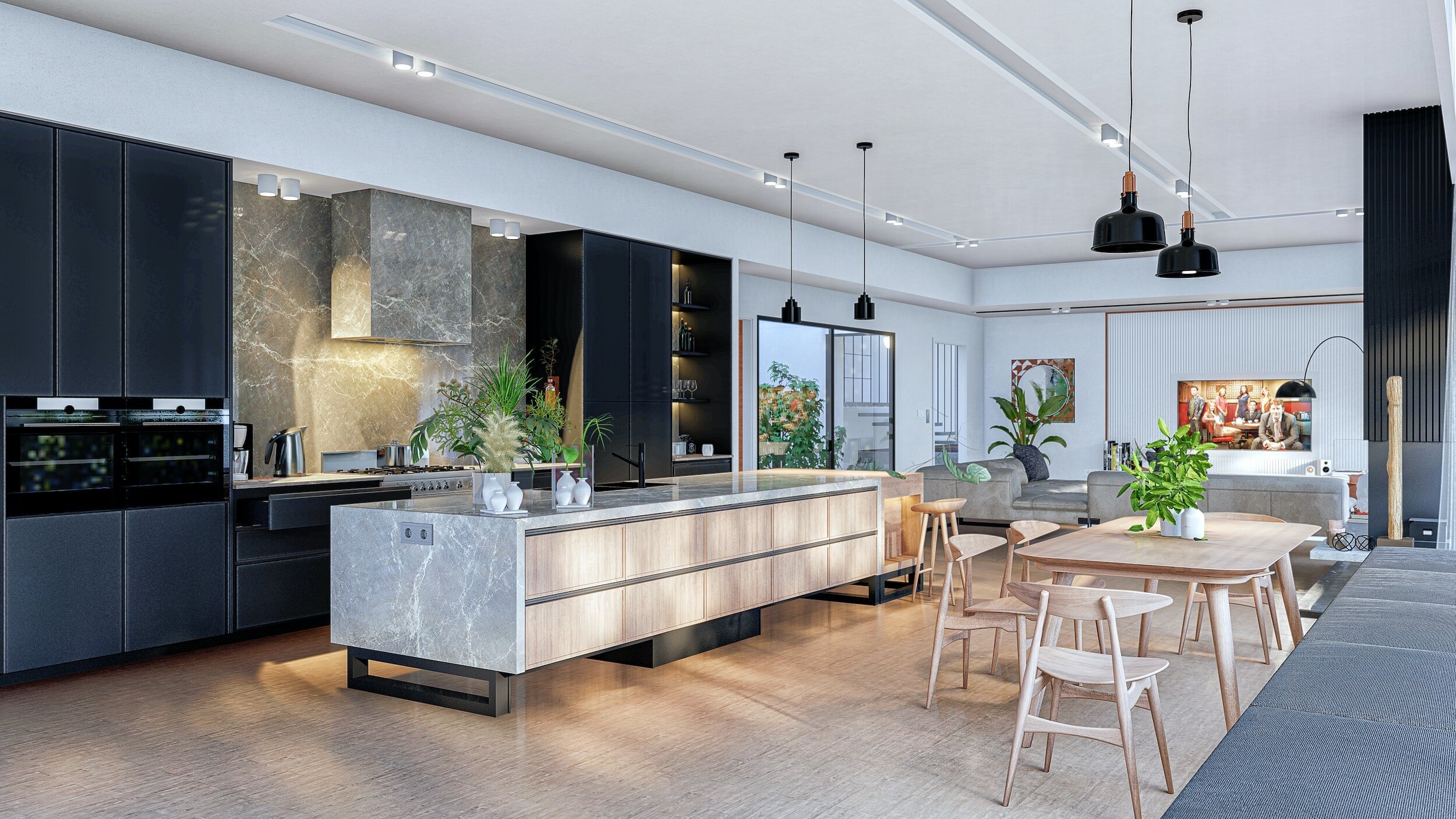7 Best 3D Rendering Styles for Luxury Homes That Sell Properties Faster
In the competitive luxury real estate market, the quality of your 3D renderings directly impacts how quickly your properties sell. As potential buyers increasingly start their property search online, the way your visualizations look can be the difference between a property that gets immediate interest and one that gets overlooked.
For architects, developers, and real estate professionals selling high-end homes, choosing the right rendering style is an important decision. This article explores the seven most effective 3D rendering styles that help sell luxury homes faster and at better prices in 2025.
Why Rendering Style Matters When Selling Luxury Homes
Luxury home buyers have different expectations when looking at property visualizations:
Emotional Connection: High-end buyers typically buy based on emotion first, then justify with logic
Brand Image: The look of your renderings says a lot about your development's quality
First Impressions: Luxury buyers make quick judgments in seconds
Perceived Value: Better visual quality directly links to how valuable the property seems
Industry research shows luxury properties with premium visualizations get 45% more initial inquiries and sell 20-25% faster than those with basic imagery. Let's explore the rendering styles making the biggest impact this year.
1. Atmospheric Realism: Creating an Emotional Connection
The most sophisticated approach to luxury home visualization focuses not just on accuracy but on atmosphere and feeling. This style is great at triggering emotional responses similar to experiencing the actual spaces.
Key Features:
Movie-quality lighting techniques
Natural light playing with important architectural features
Golden hour or blue hour settings that create emotional responses
Subtle atmospheric effects (mist, light diffusion, gentle shadows)
Strategic focus to guide viewer attention
Best Uses:
Signature architectural properties with distinctive shapes
Homes with dramatic natural surroundings
Properties designed around specific lighting conditions
Projects where emotional connection is important for marketing
Atmospheric realism stands out because it goes beyond just showing a space – it creates an experience. When potential buyers can feel the warmth of sunset coming through floor-to-ceiling windows or the peaceful feeling of a misty morning on a waterfront property, they're already mentally moving in.
2. Lifestyle Contextual Rendering: Selling a Way of Life
Today's luxury buyers aren't just purchasing buildings—they're buying lifestyles. This rendering approach focuses on showing the property within the context of the lifestyle it enables.
Key Features:
Thoughtfully staged scenes showing the home being used
Carefully selected furnishings and accessories matching target buyer profiles
Activity scenes suggesting how spaces support luxury living
Inclusion of luxury lifestyle elements (fine wine, art collections, luxury cars)
Subtle human presence without distracting from architectural features
Best Uses:
Resort-style properties with many amenities
Homes designed for entertaining
Multi-generational luxury homes
Properties in exclusive communities with lifestyle benefits
Industry research shows that contextual renderings increase perceived value by 12-18% compared to empty space visualizations. By showing not just the space but how it enhances life, these renderings help buyers picture their future in concrete terms.
3. Material-Focused Detail: Showcasing Craftsmanship
In the ultra-luxury segment, material quality and craftsmanship are extremely important. This rendering style emphasizes the tactile qualities and material integrity that justify premium pricing.
Key Features:
Photographic accuracy in material representation
Enhanced detail on signature surfaces and finishes
Physically accurate light interaction with materials
Microscopic attention to connection details and craftsmanship
True-to-life aging and patina on natural materials
Best Uses:
Custom homes using rare or artisanal materials
Properties with architectural heritage elements
Designer collaborations with signature material palettes
Projects where material quality is a primary selling point
When marketing properties with exceptional material quality, this style communicates craftsmanship in ways that specification sheets never could. Buyers investing in luxury properties want to see exactly how premium materials like Italian marble catch morning light or how custom bronze develops depth and character.
4. Environmental Integration: Harmony with Nature
For properties where the relationship between architecture and environment is a selling point, this style emphasizes seamless integration with natural surroundings.
Key Features:
Extended environmental context beyond immediate property boundaries
Seasonal variations showing the property throughout the year
Emphasis on transition spaces between indoors and outdoors
Realistic environmental elements (native plantings, water features)
Architectural transparency highlighting nature-structure relationship
Best Uses:
Oceanfront, lakefront, or mountain properties
Homes with significant glass elements or indoor-outdoor flow
Eco-luxury developments with sustainability focus
Properties in dramatic or unique natural settings
Industry reports show that properties that visually demonstrate environmental integration command 15-25% higher prices. This rendering style speaks directly to buyers seeking harmony between luxury living and natural beauty.
5. Day-to-Night Transition Renders: Showing Versatility
One of the most compelling newer styles showcases how a property transforms from day to night, demonstrating the home's versatility and appearance under different conditions.
Key Features:
Split or side-by-side day/night visualizations of the same view
Strategic lighting design highlighting architectural features
Illumination layering showing interior lights, landscape lighting, and ambient sources
Mood transformation between daytime and evening presentations
Functionality shifts between day and night uses
Best Uses:
Homes with significant lighting design investment
Properties with dramatic nighttime appearances
Developments in scenic areas with day/night appeal differences
Residences with entertainment focus
Marketing teams report that day-to-night renderings have increased client conversion rates by 30-35%. They effectively sell two homes in one—the daylight experience and the evening ambiance—expanding the property's perceived value.
6. Aerial Contextual Views: Location Value Visualization
For properties where location is a prime selling point, this style utilizes elevated perspectives to showcase proximity to amenities, views, and neighborhood context.
Key Features:
Drone-like elevated perspectives showing property in neighborhood context
Highlighting proximity to valuable amenities (beaches, golf, shopping)
View corridors and sightlines from the property
Privacy features and boundary relationships
Access routes and connection to transportation options
Best Uses:
Properties in exclusive neighborhoods or communities
Homes with significant view assets
Residences where privacy is a selling feature
Developments where location adds significant value
Industry data shows that including aerial contextual renders in marketing packages increases lead quality by 25-30%, with buyers arriving at showings better informed about the property's contextual advantages.
7. White Model with Accent Details: Sophistication Through Simplicity
Sometimes the most sophisticated approach is also the most restrained. This style uses predominantly white or monochromatic base representations with selective color or detail highlighting to draw attention to key architectural features.
Key Features:
Clean, white or monochromatic base model
Strategic color accents on signature architectural elements
Simplified context to emphasize structural design
Subtle material indications without full texturing
Targeted lighting to sculpt form perception
Best Uses:
Architecturally significant properties with strong formal elements
Homes with innovative structural features
New modern or contemporary designs
Projects where architectural pedigree is a key selling point
This style speaks to sophisticated buyers who appreciate architectural integrity and design clarity. For clients who are art collectors or design aficionados, these renderings signal that the architecture itself is the primary artwork.
How to Implement These Rendering Styles for Maximum Impact
Selecting the right rendering style is only the first step. To maximize the effectiveness of your luxury property visualizations:
Mix Styles Strategically:
Use different styles for different property features
Apply atmospheric realism for signature spaces
Use material-focused renders for custom details
Implement contextual lifestyle imagery for marketing materials
Adapt to Your Audience:
Research your specific buyer demographic's visual preferences
Consider cultural differences in aesthetic expectations
Align rendering style with buyer generation (Millennial luxury buyers respond differently than Baby Boomers)
Match visual sophistication to price point expectations
Optimize for Different Platforms:
Adjust rendering style to work well across viewing devices
Create variations optimized for print vs. digital
Consider social media-specific crops and compositions
Develop interactive versions for website engagement
Consider Seasonal Relevance:
Create rendering variations that reflect seasonal changes
Adjust styles to match market timing (spring listings vs. winter)
Consider how natural light changes affect property appearance
Plan rendering packages for multi-season marketing campaigns
3D Rendering Styles Return on Investment
The investment in premium 3D rendering styles delivers measurable returns in the luxury market:
Engagement Metrics by Style:
Atmospheric Realism: 40-45% longer website visit duration
Lifestyle Contextual: 35-40% higher inquiry rate
Material Hyperrealism: 20-25% higher in-person showing conversion
Day-to-Night Transitions: 30-35% higher social media sharing
Investment Considerations:
Average cost difference between standard and premium renderings: 30-40%
Average time-on-market reduction with premium visualizations: 25-30%
Average increase in final sale price with premium marketing visuals: 4-7%
For a $5M property, the additional investment in premium rendering styles typically returns 5-10x in reduced carrying costs and increased final sale price.
Choosing the Right Visualization Partner
When implementing these premium rendering styles, the selection of your visualization partner is critical:
Key Considerations:
Portfolio depth specifically in luxury residential projects
Technical capability across multiple rendering styles
Understanding of luxury market positioning and buyer psychology
Ability to customize approaches to specific property strengths
Experience with multi-platform marketing campaigns
Questions to Ask Potential Partners:
Can they provide examples of successful luxury property visualizations?
What is their process for understanding your specific buyer demographic?
How do they adapt style to highlight property differentiators?
What metrics do they track to measure visualization effectiveness?
How do they stay current with evolving aesthetic preferences?
The Future of Luxury Property Visualization
Several emerging trends will further transform luxury property visualization:
AI-Enhanced Personalization:
Visualization adaptation based on viewer demographics
Real-time style adjustments to match viewer preferences
Automated seasonal and time-of-day variations
Context-aware rendering based on viewer location
Interactive Material Exploration:
Real-time material customization for potential buyers
Interactive surface exploration with tactile feedback
Material comparison tools with realistic representation
Integration with physical material samples
Multi-Sensory Integration:
Sound design paired with visual experiences
Multi-sensory presentation environments
Scent integration for complete sensory marketing
Temperature and airflow simulation
Conclusion: Beyond Pretty Pictures to Selling Experiences
As we move through 2025, the difference between successful luxury property marketing and less effective approaches increasingly depends on the ability to create experiences rather than just images. The most effective rendering styles don't simply show properties—they transport potential buyers into spaces where they can imagine their future lives.
The industry has moved from creating pictures of buildings to creating emotional experiences of homes that haven't yet been built. That shift from visualization to experience creation is where the real value lies in today's luxury market.
By strategically selecting rendering styles that align with your property's unique value proposition and target buyer psychology, you create a powerful advantage. In a market where first impressions are increasingly digital, the quality of your visual approach directly impacts both sales speed and final transaction value.
Ready to elevate your luxury property marketing with premium visualization styles? Contact Panoram CGI today to discuss how our tailored approach can showcase your development's unique value proposition to discerning luxury buyers.









